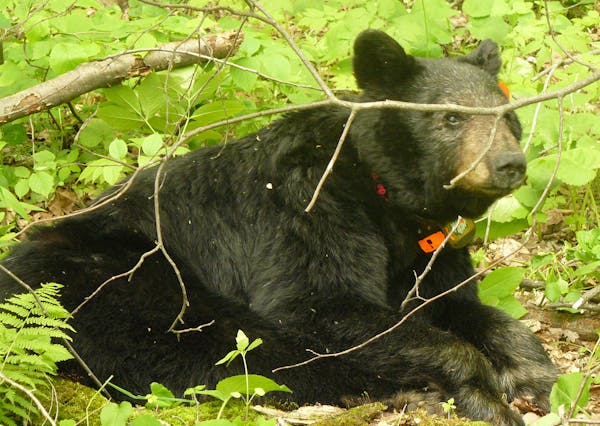Folks, we need a master conservation plan. And right now no such plan exists.
Far from it.
In fact, if the past is prologue, such a plan never will be developed in Minnesota. There's too much inertia among state agencies and too few conservation leaders in state government.
And even fewer citizens who give a rip.
At stake are all manner of wildlife, but perhaps none more so than the fowl that historically have meant the most to Minnesotans: ducks and pheasants.
But not only these.
Upland sandpipers, marbled godwits, short-eared owls, western meadowlarks and bobolinks, among many other songbirds, as well as a shost of other mammalian and aquatic species, also will suffer if the loss of grassland and wetland habitat continues apace here and in the Dakotas — the two states that represent the nation's last best places for prairie wildlife.
Virtually in real time, we are witnessing the extinction of these resources, and with them the lifestyles they have long afforded Minnesotans.
Also at risk are the state's lakes and fish and the recreational pursuits attached to them, each threatened by Asian carp, zebra mussels and other invasive species.
But the biggest problem?
We have no plan.
Yes, we have the Department of Natural Resources. And the Board of Water and Soil Resources. And the Fish and Wildlife Service and the Natural Resources Conservation Service, among other state and federal agencies.
Minnesota is also home to more and more active wildlife, conservation and environmental groups than any other state. And we have the Legacy Act, which provides about $100 million a year for fish, game and wildlife habitat.
But Minnesota's conservation and natural-heritage preservation problems can't be solved by a wetland project here and a wildlife management area established there.
The reason:
The state's fish, wildlife and their habitats face threats on so many levels that anything short of a plan well-developed and effectively executed will all but guarantee failure.
Consider:
• Aging baby boomers in Minnesota and across the nation are leaving outdoor activities in droves, and in many cases taking their financial support with them.
• Fewer young people are being exposed to hunting, fishing and many other outdoor activities than ever before. Reasons are varied: urbanization makes participation difficult; team sports consume many kids' free time; single-parent families are increasingly common, some of which have less expendable income; and everyone, it seems, has too little free time.
• Meanwhile, worldwide, the population is rising nearly exponentially, increasing demand for cropland, some of which historically in Minnesota and across the United States, has been set-aside for conservation and wildlife.
• Additionally, the government's ethanol subsidization continues, increasing corn and farmland prices while fueling a massive land conversion in the Dakotas, where grasslands and native prairies are being plowed up, in many cases for the first time. Example: in 2001, fewer than 1 billion bushels of corn were delivered to ethanol plants. By 2012, the figure was 5 billion bushels.
• • •
We need a plan.
• First and foremost, Gov. Mark Dayton (or whoever is in that office when/if action is taken) needs to corral a small task force of smart people, perhaps preferably those outside natural resources management, a group that is too close to the problem, too entrenched or otherwise not known for its creativity.
One idea: Leverage some of Minnesota's major corporations, all of which have a huge stake in keeping the state attractive to employees and prospective employees. Some have executive leave programs that could contribute proven problem solvers to a task force.
• Secondly, at the outset, acknowledge that no conservation plan — old or new — can succeed unless more Minnesotans are engaged in the outcome. This can only be accomplished by "localizing" conservation, e.g., by developing the state into subregions, in which all state and federal agencies, together with wildlife and environmental groups and citizens in those areas, prioritize conservation problems and resolve them collectively.
• The DNR's job in this type of plan would be to organize the regional conservation groups and provide technical expertise.
Think it wouldn't work?
A variation of it already is, and will gain momentum beginning Tuesday when about 75 natural resource professionals gather near Spicer in what is being billed as the state's first Prairie Summit ever.
The intent of the Prairie Summit is to further organize and implement an ambitious 2.2 million acre state prairie and grassland recovery plan agreed to last year by state and federal agencies and 10 leading conservation groups.
From Minnesota's northern border with Manitoba to its southern boundary with Iowa, the plan calls for connecting corridors of conserved and/or restored grasslands and grassland-wetland complexes that in the end will perform as functioning prairie ecosystems, a worthy goal.
The work will be costly, complicated and challenging to implement on every level. But at stake are multiple species and their habitats.
Success of the prairie plan will depend on leadership provided by conservation and environmental groups in 10 distinct western Minnesota working areas or "subregions," stretching from Manitoba to Iowa.
The groups' responsibilities will include marshaling available resources to accomplish habitat goals in their assigned areas. Valuable as the effort will be to fish and wildlife, and prairie ecosystems in general, it might be more so as a blueprint for developing a new way to deliver conservation in Minnesota.
Or not.
Either way, we need a plan.
Dennis Anderson danderson@startribune.com
Anderson: Anglers protesting tough new Mille Lacs rules are wrong

Anderson: Courts, not politicians, should rule on Red Lake, White Earth lands

Anderson: Multimillion windfall gets invasive carp deterrent moving
![A young whitetail deer searches for food as another blanket of snow coats the arrowhead. ] Minnesota -State of Wonders, Arrowhead in Winter BRIAN PETE](https://arc.stimg.co/startribunemedia/WK32UWWY6FKNWJUIYCJ6ZPT4AU.jpg?h=91&w=145&fit=crop&bg=999&crop=faces)
Anderson: In NE Minnesota, DNR staff, habitat and deer all decline


